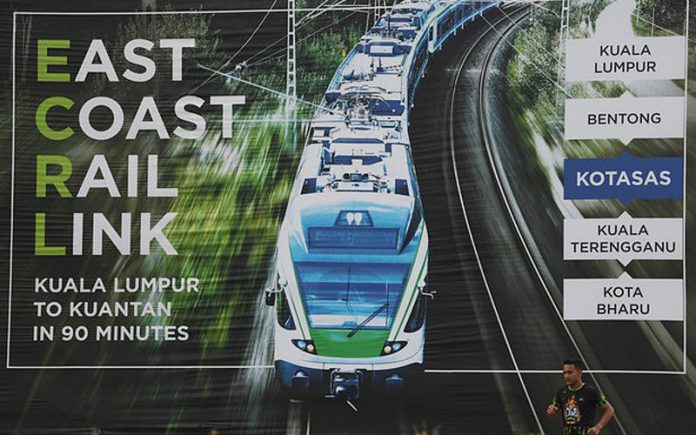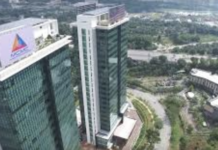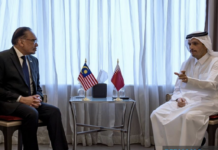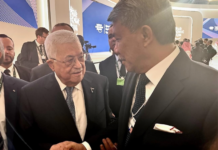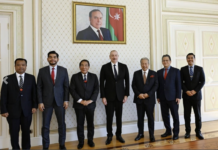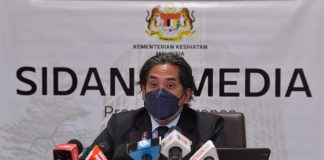KUANTAN, Dec 10 (Bernama) — The installation of the first track for the East Coast Rail Link (ECRL) project will begin tomorrow – three years before the 665-kilometre (km) railway line that connects the East Coast and the West Coast in the Peninsula starts operating in January 2027.
The Yang di-Pertuan Agong, Al-Sultan Abdullah Ri’ayatuddin Al-Mustafa Billah Shah, is set to grace the ceremony to install the first ECRL track at the Section 10 ECRL Station Site in Gebeng here.
In May, Malaysia Rail Link Sdn Bhd (MRL) regional construction manager (Pahang) Khairi Khalid Abdul Rahman was quoted as saying that the installation of the first track would involve the 90km route from Gebeng to Dungun, Terengganu, and is expected to be completed in three to four months.
The track installation is expected to proceed at a rate of 1.5km per day and Gebeng is the first location considering that the materials used, including diesel locomotives made by CRRC Ziyang, China to launch the installation process, were brought to Malaysia using cargo docked at the Kuantan Port.
The ECRL is a project owned by MRL, which is a special purpose vehicle (SPV) company wholly owned by the Minister of Finance Incorporated while China Communications Construction Company Ltd (CCCC) is the project’s engineering, procurement, construction and commissioning contractor.
The ECRL, which starts in Kota Bharu, Kelantan and ends in the Klang Valley, Selangor, will become a national infrastructure that connects major cities and towns as well as improves the public transport system in the rural areas in all four states that it passes through.
The construction is divided into three sections, namely Section A from Kota Bharu to Dungun, Section B from Dungun to Mentakab, Pahang and Section C from Mentakab to Port Klang, with a total of 20 stations and 40 tunnels with a distance of over 60km.
With the passenger trains travelling at a speed of 160km per hour and the freight trains at 80km per hour, the travelling time from Kelantan to the Klang Valley can be cut to around four hours compared to seven hours by road, which can reach 12 hours during the festive season.
In addition to being a catalyst for the economic equality of the West Coast and East Coast and spurring commercial activities, the implementation of ECRL will also open job opportunities, with about 23,000 workers needed during the peak period of its construction and also involving the participation of 40 per cent of local contractors for civil works estimated to be worth up to RM10 billion.
The mega project, which was inaugurated on Aug 9 2017, was also slightly affected by the change of government in 2018, including its suspension for nine months. However, it then resumed with a new alignment from Kota Bharu-Mentakab-Jelebu-Kuala Klawang (Negeri Sembilan)-Bangi-Kajang (Selangor)-Putrajaya-Port Klang.
However, in March 2021, the Federal Government announced that the ECRL line would return to the original alignment, which is through Section C (Mentakab-Port Klang) after taking into account surveys and studies to make the ECRL, estimated to be worth RM50 billion, a more efficient national rail transport.
To avoid recurring alignment problems, the ECRL project route was finalised in 2022 with the then Minister of Transport signing the full approval of the C2 Line Railway Scheme, which was submitted by MRL, as the owner of the ECRL project, through the Land Public Transport Agency (APAD).
In addition, one of the perceptions that the project faced was related to the environment, which then led to the MRL emphasising that they are committed to protecting the environment, forests, wildlife and the quality of life of the people along the route.
This included the construction of over 145km of tunnels and viaducts aimed at significantly reducing the loss of forest reserves, reducing hill cutting and allowing the free movement of wildlife, taking into account that the area along the ECRL line is an important habitat for various animal species.
In addition, the project’s Environmental Impact Assessment Report (EIA) was also approved in June 2017, while close collaboration was forged with relevant parties, including the Department of the Environment and the Department of Wildlife and National Parks (Perhilitan) as well as the Forestry Department Peninsular Malaysia.
The CCCC, for example, allocated RM9 million to Perhilitan to carry out wildlife surveys, surveillance and conflict mitigation.




